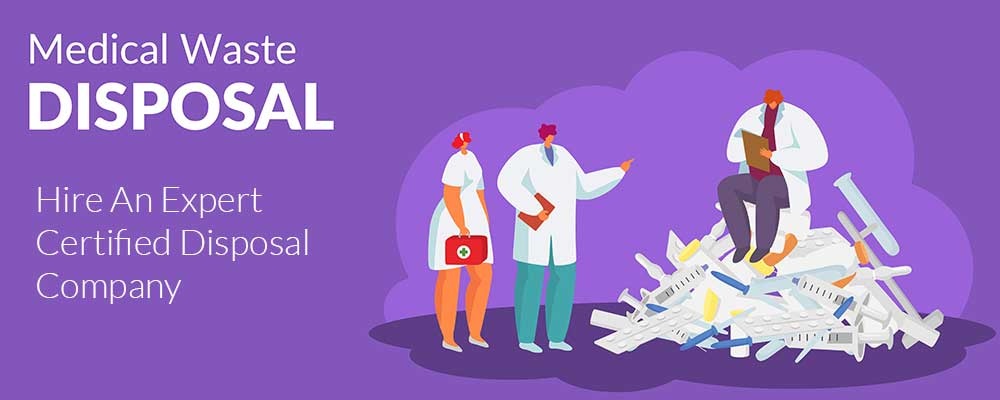While one may not think of healthcare industry organizations as hazardous waste generators, they are regulated under federal and state hazardous waste laws when it comes to medical waste disposal. Pharmaceutical waste is subject to strict federal laws, including those enforced by the Environmental Protection Agency (EPA), Drug Enforcement Administration (DEA), Department of Transportation (DOT), and Occupational Safety and Health Administration (OSHA).
In order to help medical practices, hospitals and medical manufacturing facilities understand their legal requirements, avoid costly fines and legal hassles, we have created 5 best practices to help facilities manage medical waste streams.
1. Identify your hazardous waste streams.
In 1976 the Resource Conservation and Recovery Act (RCRA) empowered the EPA with the authority to define and regulate hazardous waste, including pharmaceutical hazardous waste. It is crucial for medical facilities to identify your medical waste.
This is referred to as “hazardous waste determination.” Hazardous waste determination is a regulatory requirement that involves distinguishing what type of wastes you produce and the quantity you generate. Identifying how much you generate is essential to understanding your hazardous waste generator status and which regulations apply to your organization.
2. Characterize your waste.
After making a waste determination, each healthcare facility must characterize its hazardous waste. Characterization is a very specific term that applies to wastes that are hazardous. There are several different categories of hazardous waste. The ones that most often apply to the medical industry are:
-
U-listed wastes, which are typically chemotherapy drugs and some additional medicines.
-
P-listed wastes, which are acutely hazardous to drinking water and the environment (e.g., nicotine and warfarin)
-
D-listed wastes, which have characteristics that make them toxic, reactive, flammable, or corrosive. Examples include chloroform, silver, aerosol inhalers, and strong acids and bases.
In the characterization process you are trying to determine which characteristics make the substance hazardous by asking questions such as:
-
Is the medical waste toxic?
-
Is the waste ignitable?
-
Is it corrosive?
-
Is it reactive?
3. Segregate hazardous substances based on their characterization.
In the world of pharmaceutical waste disposal, segregation or separating out certain types of hazardous pharmaceuticals is legally required.
Your facility must know which pharmaceutical hazardous wastes can be disposed together and which cannot. A qualified hazardous waste disposal company can help you establish the processes that you will need to maintain your facility’s compliance with hazardous waste laws.
4. Consider the laws of all regulatory bodies.
The EPA isn’t the only regulatory bodies with jurisdiction over pharmaceutical waste. The DOT, DEA, and OSHA as well as state agencies all regulate the handling, transportation and disposal of pharmaceutical waste.
-
The DOT requires you to segregate pharmaceutical waste according to chemical compatibility to prevent reactions from taking place inside waste containers during transportation.
-
The DEA requires you to separately dispose of controlled substances, also called “scheduled” drugs to help prevent these drugs from being diverted for nonmedical uses. These include street drugs such as heroin; pain medications such as morphine, codeine, and hydrocodone; and some anti-anxiety medications and sleep aids.
-
OSHA is concerned about providing a safe and healthful work environment for those who work with pharmaceutical waste.
-
In California, the Department of Toxic Substances Control (DTSC) has some of the toughest hazardous waste laws in the country, and many organizations fall short of their requirements.
5. Choose a licensed and reputable disposal company for all your waste streams.
It is crucial to make sure that your vendor is legally capable of disposing your waste. For example, if you are disposing controlled substances, be sure your vendor is a DEA-registrant. Additionally skilled specialty waste providers can help reduce your risk by developing the correct procedures and documentation to ensure that your organization’s pharmaceutical waste is handled correctly and within the appropriate timeframes.
To learn more about the risks associated with medical waste removal, download a copy of our Free Case Study and find out how an out-of-state drug manufacturer almost had a plant shutdown for failing to understand California's stricter laws.


Comment